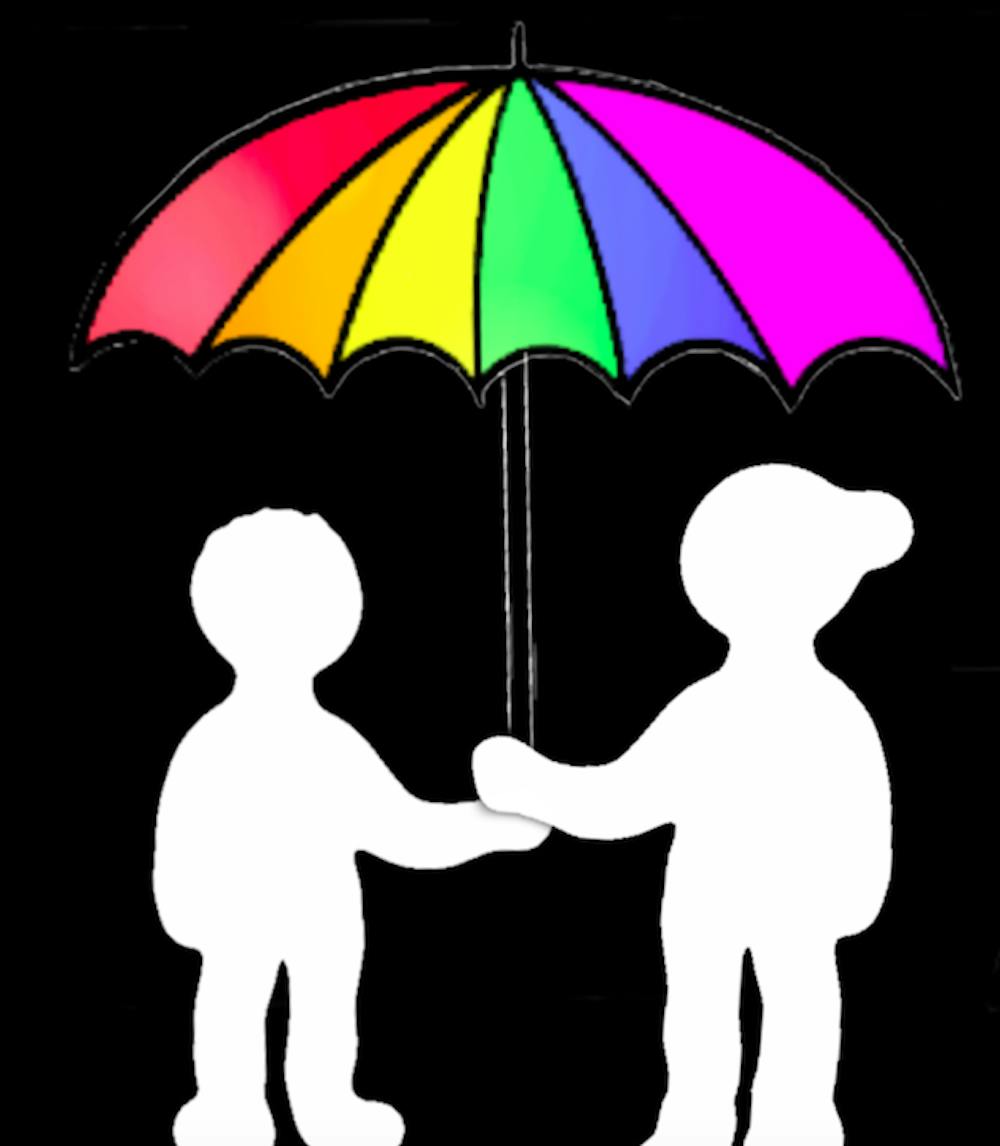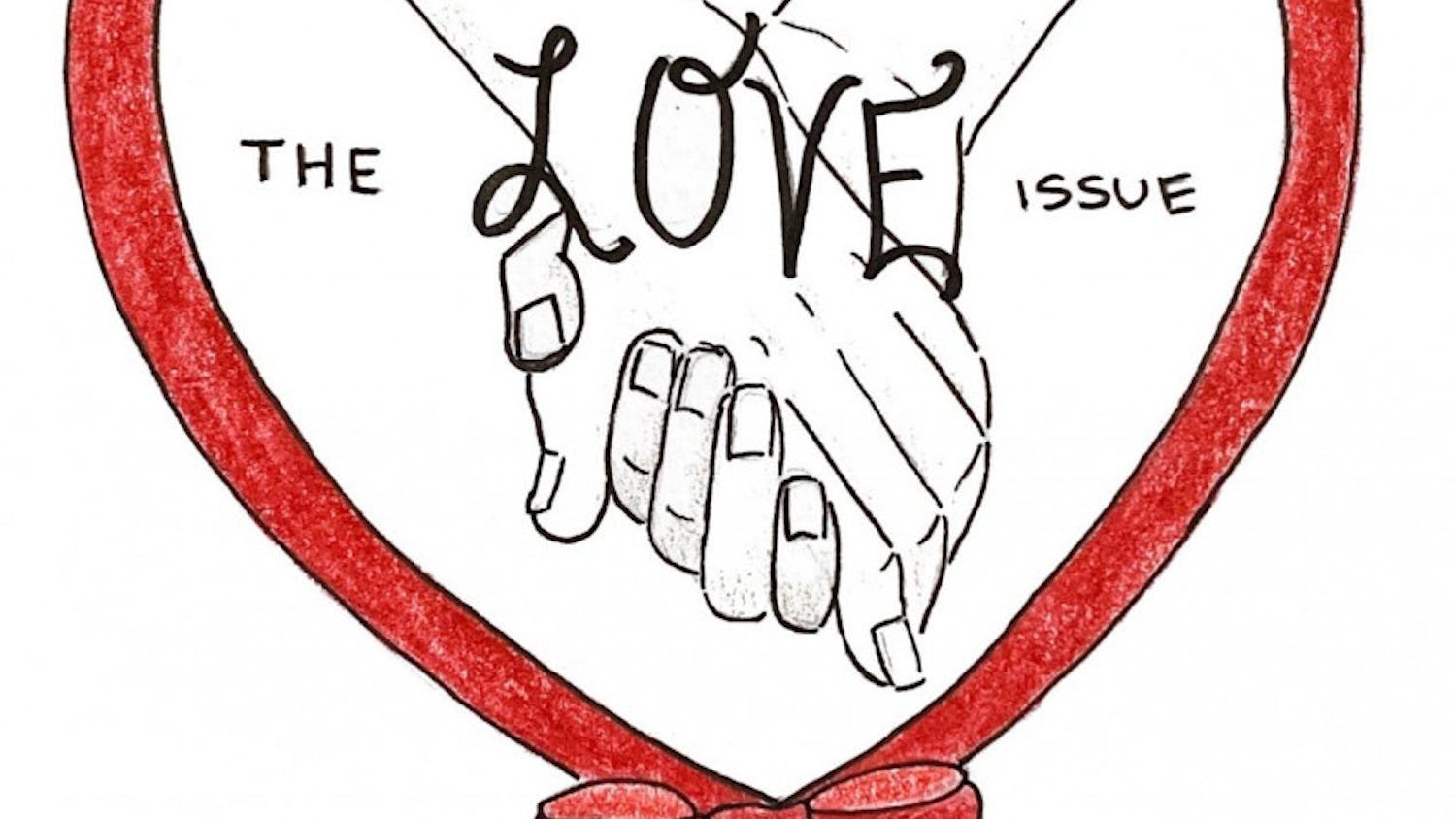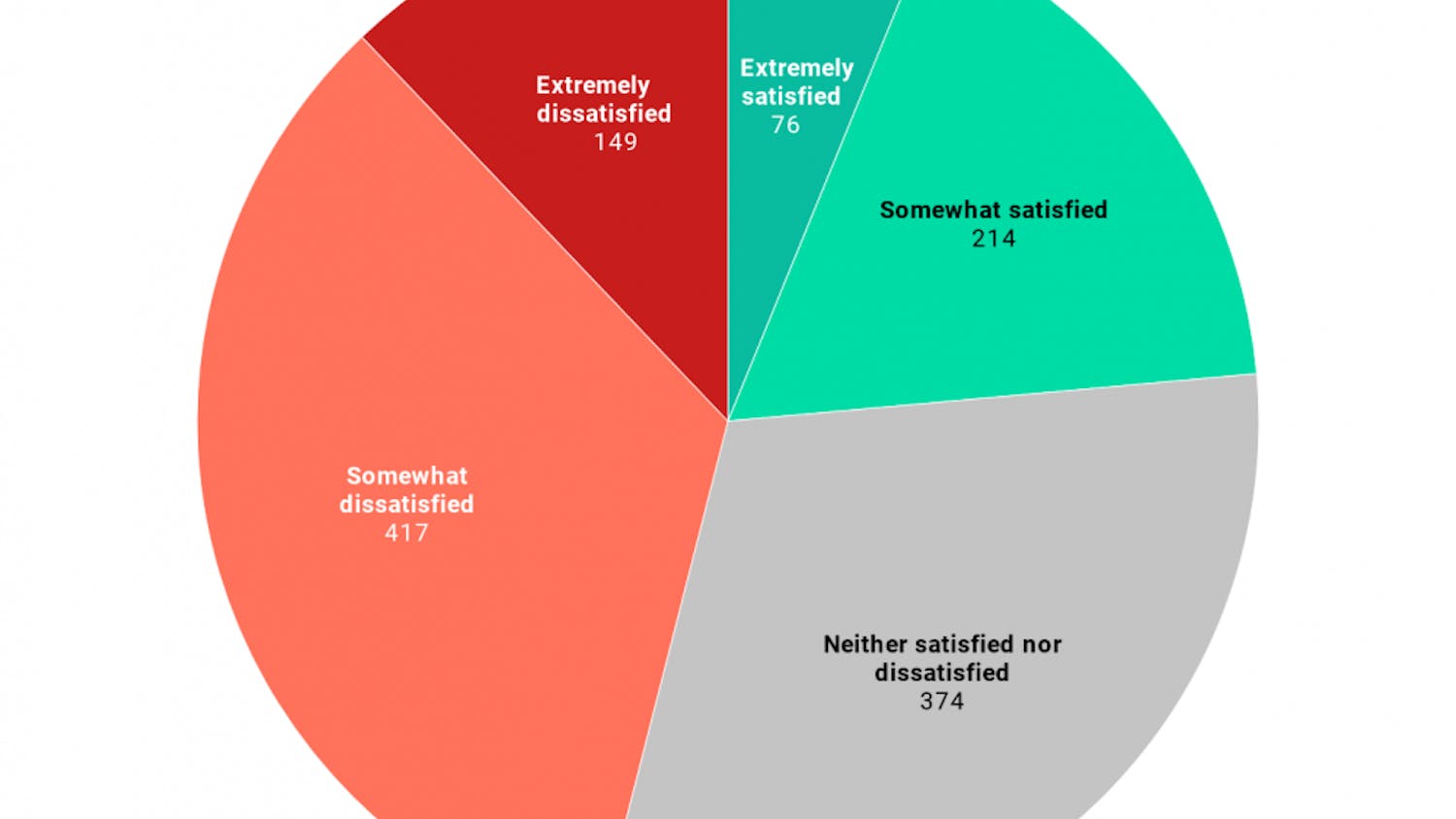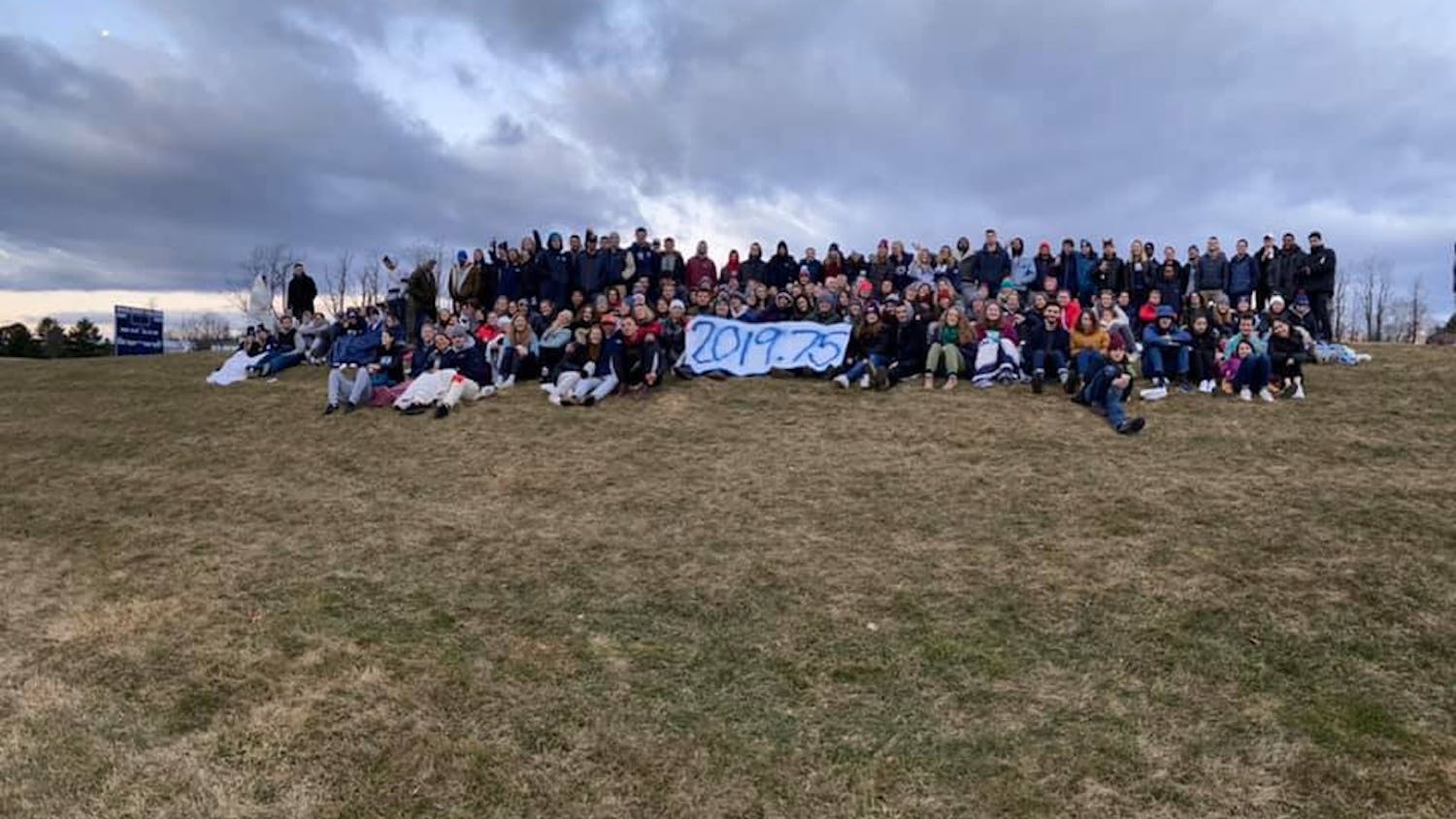Mixed in with the chaos and messy moments of young adults trying to understand themselves and their places in the world— compounded with fear, and conflict, and exclusion — are moments of joy and love within the queer community. Stories of friends, of partners, of community, and of self that are unequivocally worth celebrating.
While united under a shared family of identities and similar struggles, each queer student has their own unique story. This article is neither a summation of the troubles, nor of the beauties of queer love on campus. It is simply a collection of queer love stories.
Blurring the lines between romance and friendship
Rachel H. ’19.5 discovered her queer identity on campus. She has experienced “some of the most genuine love of [her] life from the queer community at Middlebury, both in friendships anad romantic relationships.”
“Being queer has really essentially shaped who I became in ways that I’m really really proud of,” she said. “My queer friends taught me how to have a voice and how to speak up for myself and how to be ok with being different. And that there are so many ways to love.”
For Rachel, queer love blurs the lines between romance and friendship, and many of her closest friends are her exes.
“Usually, when I’ve dated someone, it's been because I loved them for their friendship and the personal things about them in addition to and beyond just being attracted to them,” she said.
According to Rachel, the smaller size of the queer community and dating pool necessitates maintaining amicable relationships after breakups. Especially among female and nonbinary queer Middlebury students, there is a respect for emotion and a culture of open communication that allows people to preemptively address hurt instead of letting it build up. Not only does that make it easier to stay friends with past partners, it creates deep bonds between queer friends..
“I feel like my queer friends have been some of the most emotionally aware, caring, thoughtful human beings in my life, and I’m super lucky to have them,” she said. “I love them so much.”
Queer-loving your queer self

Jack C. ’20 has grown into his queer identity at Middlebury, an important part of which, for him, is performance. Jack relies on cues, like his nose ring, the limp positioning of his wrists and short shorts, to signal his queerness to those around him.
“When I walk into a room and I’m freaking wearing those tiny gold shoes that are three sizes too small and give me blisters every time I wear them and my black little short shorts and a cute shirt tucked in and I have my face done, I feel so queer because these people are seeing me,” said Jack.
Around straight people, Jack says he feels obligated to censor his queerness.
“I’m queer. But I want to be appropriate,” he said. “It's queerness that’s easy to swallow and easy to digest. I wear a nose ring but I can't go around talking about the orgy I had last night at the Mill. That’s too much.”
In queer spaces and in the company of other queer people, Jack feels that there is room for his queerness in all its wild exuberance. He views the ability and space within the queer community to connect on a shared plane of identity — of cultural references, struggles and experiences — as a form of love.
“At Middlebury I feel so free to do whatever I want,” he said. “It’s all about queer loving your queer self.”
Not queer enough: cross-sections of identity
While the love of the queer community has played a pivotal role in the experiences of many students, others feel alienated rather than accepted. As a woman of color, N. B. ’22 has never felt included in the queer community at Middlebury, which she views as overwhelmingly white and singularly focused. To belong, queerness has to be the central pillar of one’s identity.
“At Middlebury, I feel like my queerness is erased,” she said. “I’m not queer enough for the queer community.”
“Being black, race is always number one. I am black above all. I am a woman next,” she said. “Being queer is nowhere near the top of things I’ve struggled with.”
Overcoming shame
For Ciara C-H ’22, her current queer relationship has been a journey of self-acceptance and love.
During high school, Ciara came out as queer to her boyfriend, expecting acceptance and support from someone who she thought loved and cared for her. Instead, it changed everything. While the relationship continued, her queerness remained a taboo topic.
“Whenever it came up or anything about it came up, it would be very bad,” she said. “I would feel a lot of shame.”
That shame led to an unhealthy cycle of self-doubt and insecurity about her identity. Her current relationship helped her emerge from that cycle and learn to be comfortable in the uncertainty and fluidity of her sexuality.
“There are a lot of things I don’t know about my sexuality. But I can say for sure that this is true for me right now, and that she is who I want to be with,” Ciara said. “There’s not a single thing I’ve said or a single thing about me that brings her shame.”
The dark side of queer love
The queer community at Middlebury, like any other, is not without its issues.
“The love is so so strong in our community,” Rachel said, “but to fully consider love you also have to see the dark sides of it.”
Abuse, especially verbal and emotional, can be prevalent within the queer community at Middlebury, yet it often goes unspoken and unaddressed.
“There is often this sense that as queer people we need to be perfect in our relationships, that they need to be better than heterosexual relationships,” Rachel said. “Any time that there’s a flaw in a queer relationship, there’s this fear that it could be used to justify homophobia ... Abuse within queer relationships has been silenced or brushed under the rug because people think it will weaken the public image of queer love.”
Building queer spaces
Many students described the unasked-for and often unspoken acceptance from their queer peers as a form of love. In the presence of visibly out people, many feel senses of safety, security and normalcy that they may lack in the larger campus community.
“It is love in the sense of a little signifier that you will be loved here. This is a place where we have love for you,” Ciara said. “This is a place where every single person is different and their stories are different, but we have something that unites us.”
For many, a huge part of experiencing and providing that love has been through visibility. Openly queer upperclassmen model what it can mean to be queer and help younger queer people integrate into the community, explore their identities and find a home on campus.
However, that model can also lend itself to predatory behavior. Several seniors described feeling alienated from queer spaces as freshmen because older peers seemed focused on finding romantic partners and hook-ups rather than genuinely looking out for younger students.
Now upperclassmen, Van Lundsgaard ’21 and Rachel have worked to reverse those practices and create a healthier system of mentorship and queer spaces. Rachel collaborated with other super senior Febs to revive Queers, Lovers and Homies, a group of female-identifying and non-binary queer folk who party and hang out together. Van has used his position as a party captain for the ultimate frisbee team to promote a team culture where queerness exists in the open and is an accepted and integral part of the community.
The hope of these spaces is to show younger students that there are upperclassman they can come to for help and guidance and to allow queer people to connect and explore their identities in comfort. For current underclassmen, the love felt in those spaces has played an important role in making Middlebury a home, according to Eva ’23.
“Wanting to support your friends and your community is a huge form of love,” Eva said. “It’s community love. Its love in its purest form. You want to help someone and care for someone for their own benefit.”
Sunshine on the other side
“Queer love is so beautiful and powerful and I'm so grateful that I get to experience it, whether romantically or platonically,” said Alyssa B. ’20. “It's comforting and empowering and full of dancing and sunshine, and even when your heart is being torn out it's nice to know that there's more dancing and sunshine on the other side.”
Author’s note: Interviewees have been granted varying levels of anonymity for their own future privacy and protection.
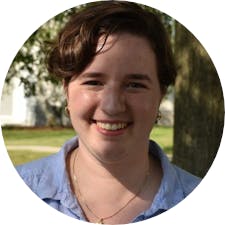
Sophia McDermott-Hughes ’23.5 (they/them) is an editor at large.
They previously served as a news editor and senior news writer.
McDermott-Hughes is a joint Arabic and anthropology and Arabic major.
Over the summer, they worked as a general assignment reporter at Morocco World News, the main English-language paper in Morocco.
In the summer of 2021 they reported for statewide digital newspaper VTDigger, focusing on issues relating to migrant workers and immigration.
In 2018 and 2019, McDermott-Hughes worked as a reporter on the Since Parkland Project, a partnership with the Trace and the Miami Herald, which chronicled the lives of the more than 1,200 children killed by gun violence in the United States in the year since the Marjory Stoneman Douglas High School shooting in Florida.

